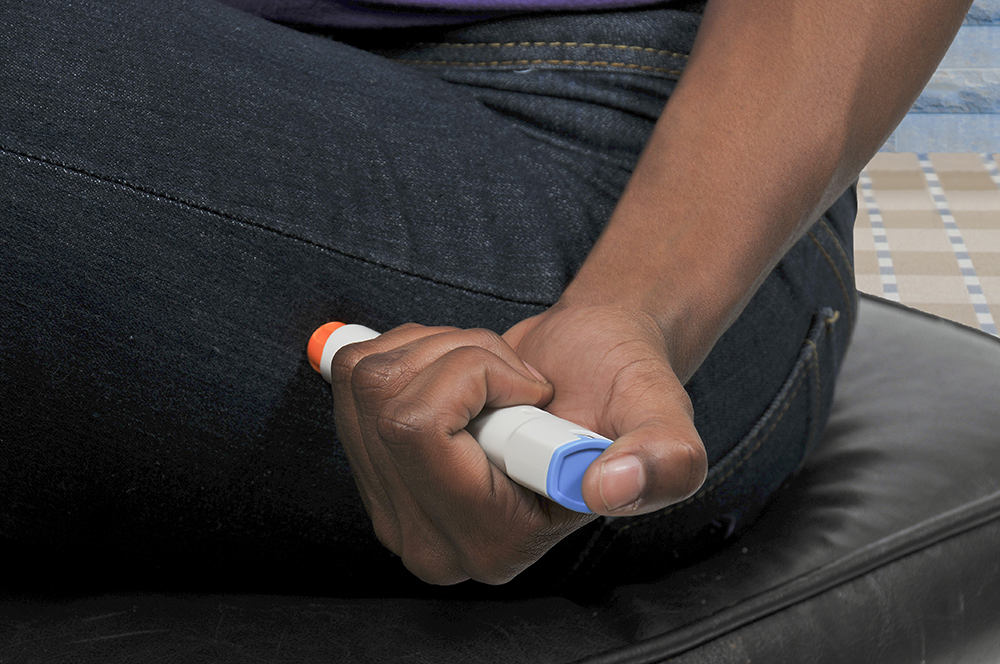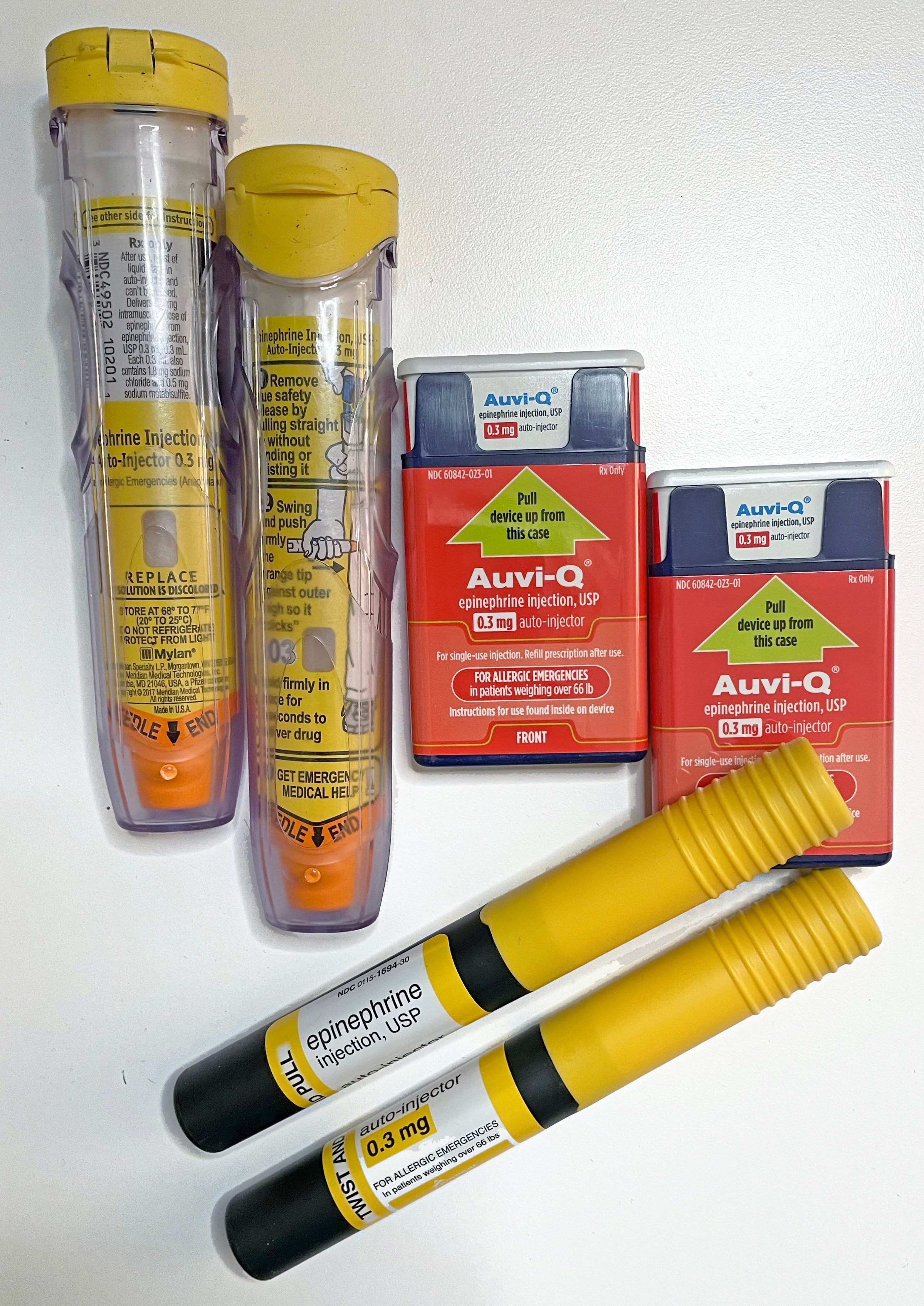When Do I Use the EpiPen?
If you have been prescribed an EpiPen, it is crucial to understand how – and when – to use it. Unfortunately, many patients hesitate to use their epinephrine auto-injector when needed, putting their health and safety at risk.
To minimize anxiety and help you get comfortable with using an epinephrine auto-injector, your allergist will discuss the signs of anaphylaxis, show you how to use your device, and work with you to create a detailed reaction plan. Common signs of anaphylaxis include:
-
- A bluish tint to the skin
- Restricted airways
- Rapid pulse
- Confusion
- Dizziness
- Loss of consciousness
- Difficulty swallowing
- Hives
- Chest pain or tightness
- Rash, redness, or swelling of the skin
- Wheezing or hoarseness
In a clinical study of fatalities due to food-related anaphylaxis, the median time interval between the initial symptoms and respiratory distress or cardiac arrest was 30 minutes. If you are experiencing these symptoms after coming into contact with a suspected allergen, you may need to administer epinephrine immediately.
Having an EpiPen can feel overwhelming, and in some cases, even scary. But a detailed emergency action plan will empower you to recognize the signs of anaphylaxis and feel confident administering treatment right away.
A reaction plan can also act as a way to communicate medical needs to family members, loved ones, babysitters, schools, camps, and daycares. Anyone who is in regular or close contact with a person at risk of an anaphylaxis reaction should have easy access to their reaction plan and to two epinephrine auto-injectors.
Those who have successfully undergone oral immunotherapy (OIT) are also advised to continue carrying EpiPens. Even after a significant time in maintenance, it is possible to have a reaction to an OIT maintenance dose or an accidental exposure.


 In order to deliver life-saving relief during a severe allergic reaction, two epinephrine devices should be on hand at all times. They should be in a safe, easily accessible place that keeps each dose at
In order to deliver life-saving relief during a severe allergic reaction, two epinephrine devices should be on hand at all times. They should be in a safe, easily accessible place that keeps each dose at